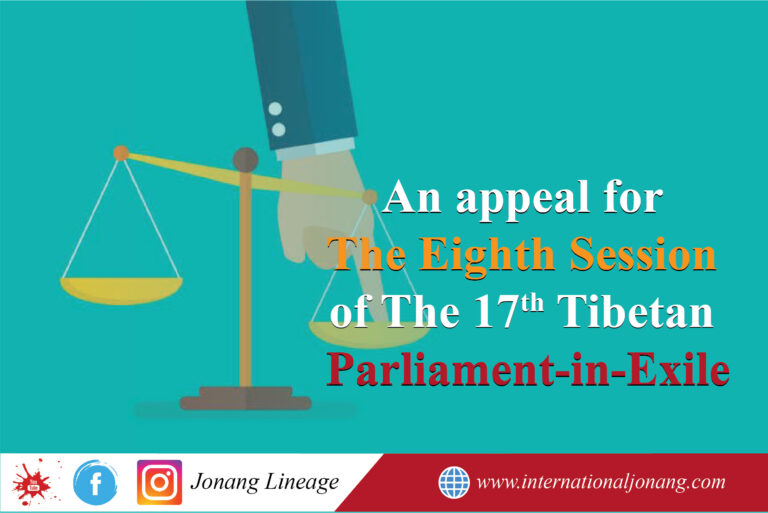Jonangpa made an appeal for the 17th session of Tibetan Parliament-in-Exile.
DHARAMSHALA, March 17: The budget session of the 17th Tibetan Parliament-in-Exile commenced on Monday in Dharamshala, with parliamentarians set to review and deliberate on the proposed budget for the fiscal year 2025-26. Assembled with Speaker Khenpo Sonam Tenphel, Sikyong Penpa Tsering, Deputy Speaker Dolma Tsering Teykhang, Kalons and parliamentarians, the house continued with the singing of the Tibetan national anthem, followed by Speaker’s session opening speech and the appointment of Acting Speakers and Ad Hoc committee members. Offering his prayers and prostrations to His Holiness the Dalai Lama, the Speaker began his opening address by greeting the Sikyong, Kalons, Deputy Speaker, and the Members of Parliament present. Speaker Khenpo Sonam Tenphel spoke on the deteriorating situation in Tibet, particularly highlighting the Chinese restrictions on Tibetan students on 10 March 2025, Tibetan National Uprising Day. He also noted the release of His Holiness the Dalai Lama’s latest book, Voice for the Voiceless, on 11 March 2025, which received widespread coverage from major global media outlets. The book also featured His Holiness’s statement that his reincarnation will be born outside of China, a declaration to which China responded with criticism. The 13-day budget session, scheduled from March 17 to 31, will focus on budget reallocation by reducing non-essential programs across departments. Parliamentarians are also expected to debate alternative revenue sources and cost-cutting measures before final approval. The outcome of this session will be pivotal in shaping CTA’s policies and financial strategies for the upcoming year. This year’s budget session comes at a time of financial uncertainty as the new U.S. administration under President Donald Trump has announced a significant funding cut, suspending all USAID support to Tibetan refugees and the exile Tibetan government known officially as the Central Tibetan Administration. An appeal made by the International Jonang Association called for equal rights for various religious sects, and appreciated ongoing efforts by the present Kasang. International Jonang Association has been making such appeals for many years. International Jonang has been appealed for equal rights on every sessions of Tibetan and they worked tirelessly and challenging

